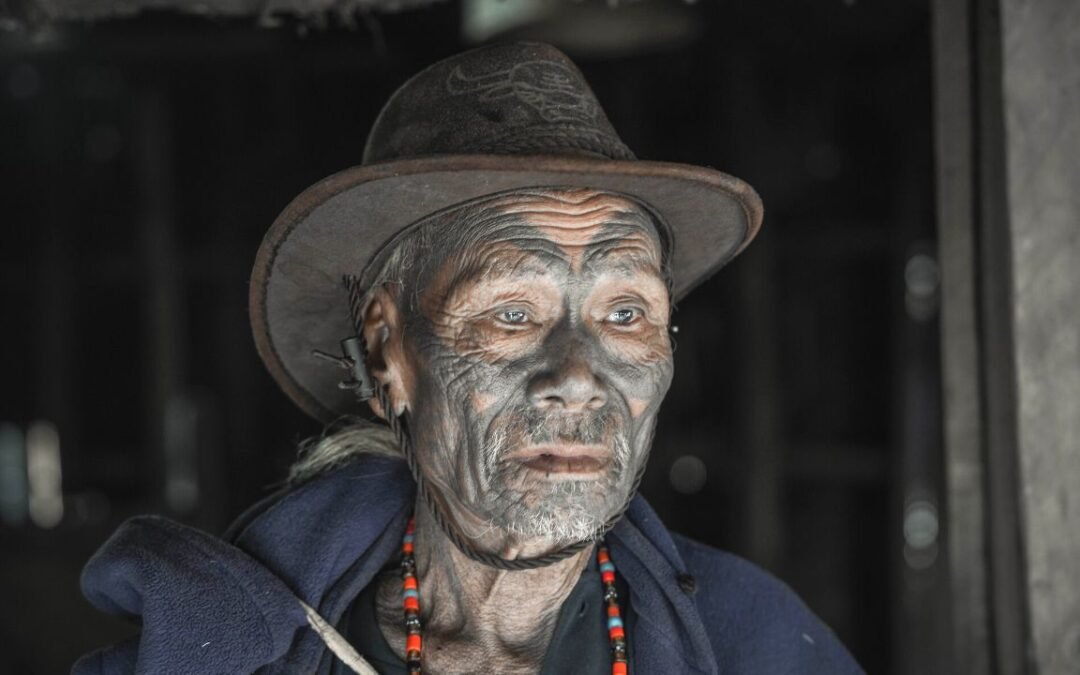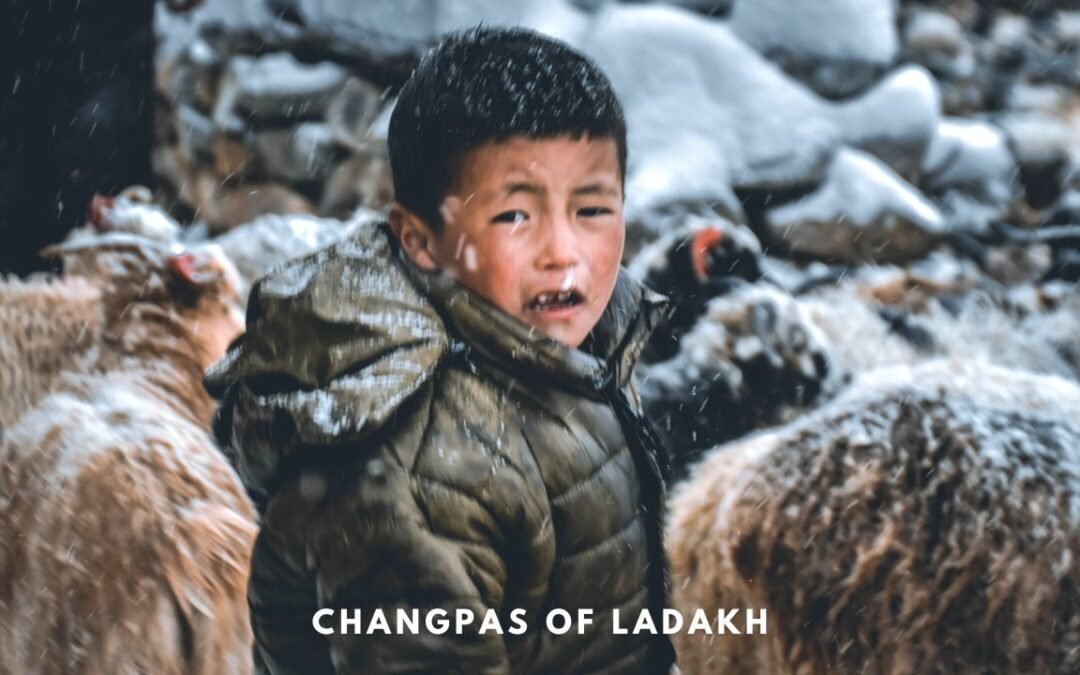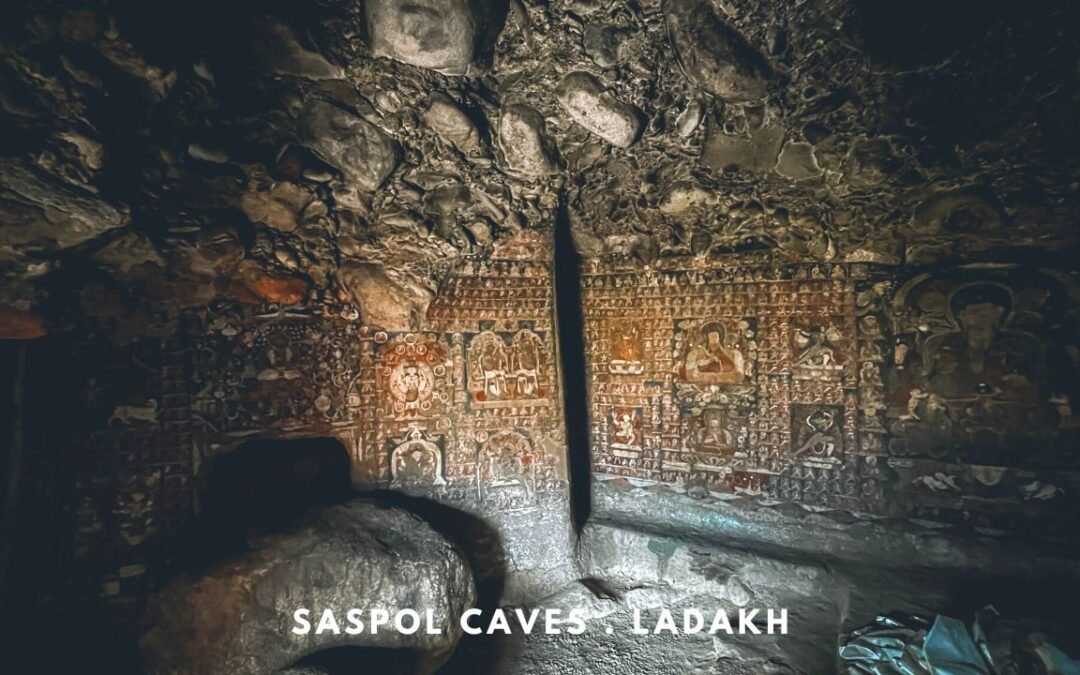Gomira dance is a rural dance form mainly practiced in the Dinajpur district of West Bengal. The dance is usually performed by the villagers to please the gods to usher in the ‘good forces’ and ward off the ‘evil forces’. Very obviously, this dance form is a part of varying traditions and the rich cultural history of Bengal. So when the opportunity came to watch a Gomira dance performance, we were more than happy to seize it.

Performing wearing the big masks is no mean feat
Origin of the Gomira Dance
Gomira dance is actually a masked dance form. The word Gomira has been derived from the colloquial form of the word “Gram-Chandi” or the female deity who is the protective force of the village. The exact origin of the dance form is not traceable and is lost in the realms of time. Another section believes that the word “Gomira” has been derived from the word ‘Gamar’, the wood that is mainly used to make the masks. The Gomira masks or “Mukha” are thus inexorably linked with the Gomira dance festival.
The Gomira dance is also part of the ritualistic dance forms that prays the Adi-Shakti or the primordial energy. Thus Gomira also celebrates Shaktism or worships Lord Shiva just like other dance forms like Gajan and Neel puja. The worship of Lord Shiva can go long back into the history when primitive animistic festivals were practiced to please the sun god, fire god and various other gods. With the advent of Buddhism, these festivals got the overtones of Mahayana sect of Buddhism. The Hindu Lord Shiva and Parvati were replaced by Bodhisattva and Tara. Later as Hinduism was revived, the female deities Adya and Chandi became more pronounced and were worshipped as much as Shiva.

Dancing to the tune
The Gomira dance is mainly celebrated during the Bengali months of Baisakh-Jaishtya and Asarh corresponding to the English months between mid-April to mid-July. This is the harvest season for the villages. The dance is also performed during the period of harvesting of mangoes when the puja of Amat-Kali is celebrated. This is usually during the period of Jaishtya.
The puja of Smasan Kali also sees the worship of deity by performing the Gomira Dance. Both Amat Kali and Smasan Kali are local deities derived from the Goddess Kali, a form of Shakti. There is no fixed date for the performance of the dance. Every village has their own troupe of dancers who perform the dance at a convenient time at a central location in the village. The dancers are all male and they portray one or many characters of female, male or animal. The dancers have all their own vocation like carpentry, cultivation and craftsmen. They perform during the festivals thus supplementing their incomes.

The Hanuman, Kali and Tiger Mask
The dance has been evolved into mainly two forms – the Gomira form and the Ram-Vanvas Form. The Gomira form is the traditional form with the characters of Bura-Buri (Old man- Old woman), Smasan Kali, Masan Kali, Dakini Bishwal, SigniBishwal, Bagh (Tiger), Nar-Rakshas and Narsingha Avatar. The Ram-Vanvas form depicts the Van Kanda of Ramayana.
Traditionally, the dance starts with the entry of two characters Buro-Buri, who are actually said to be the human forms of Shiva and Parvati.After their performance, other masked dancers enter their arena to perform. According to the Gomira tradition, these gods took human shape and descended on earth so that they may bless the humans and help them to fight the forces of evil and establish a righteous way of life.

Buro-Buri
There are no vocal or oral parts in the dance. The performers dance to the beating of dhaks (a percussion instrument) and Kantar (cymbal like instrument). The dance does not have any specific movement or form, dancers just go with the flow creating their own movements. The masks worn by the dancers are quite heavy and they wear the masks in very suffocating conditions. The locals believe that while dancing, the gods enter the dancers and they are then able to dance in such oppressive conditions.
The dancers who especially put on bigger masks often go into trance supplementing the beliefs of the villagers; they have to be restrained by sprinkling water from the Gomira Ghot. The villagers believe that the deities enter into the dancers during those moments.Infact, it is believed that when any dancer wearing the Narasingha mask is possessed, he can only be calmed by drinking human blood! So nowadays, a dance wearing the Narasingha mask is rarely performed.

The masked dance performers
Gomira Dance Masks
The Gomira masks are handcrafted by the villagers. The villagers often pledge these masks to their deities when they want their wish to be fulfilled. The wood-crafted Gomira masks represent the two forms of the dance – the Gomira and the RamVanvas.
The craft of Gomira Dance masks or mukha is practiced in certain regions of North Dinajpur district of West Bengal more so in the village of Mahisbathan is the Kushmandi Block. These masks are usually objects of worship and devotion.
Know more about Gomira mask or Kushmandi masks in our next post.

The Gomira mask
We would like to thank the various craftsmen whom we visited during the Fair. They very patiently tolerated my incessant questions about the art and the dance.
References:
Chitrolekha International Magazine on Art and Design
https://www.daricha.org/
Like this post? Please share it and let others know.
If you are aware of any such primeval art forms, please let us know at info@taleof2backpackers.com. We will be happy to showcase it.









Never heard of this before. Thanks for sharing. I would love to see it in a rural setting in Bengal
Thanks for liking… Please do visit the place… its really nice..
How fascinating is this!! Tradition and cultures like this is what makes India Incredible. Thanks for the share :).
Thanks for liking…